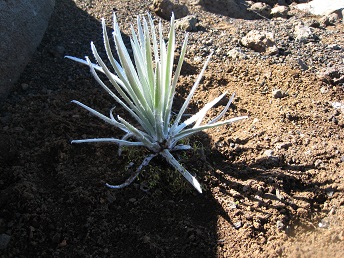Last updated: October 7, 2020
Lesson Plan
What Is My Adaptation?

- Grade Level:
- Upper Elementary: Third Grade through Fifth Grade
- Subject:
- Science
- Lesson Duration:
- 60 Minutes
- State Standards:
- Hawai‘i Content and Performance Standards III:
SC.3.1.2, SC.3.3.1, SC.3.4.1, SC.3.5.1 - Additional Standards:
- Next Generation Science Standards:
3-LS3-1, 3-LS3-2, 3-LS4-2 - Thinking Skills:
- Remembering: Recalling or recognizing information ideas, and principles. Analyzing: Break down a concept or idea into parts and show the relationships among the parts. Evaluating: Make informed judgements about the value of ideas or materials. Use standards and criteria to support opinions and views.
Essential Question
What is adaptation? How do plants and animals use adaptation to survive? What happens to a species if their habitat is impacted negatively?
Objective
At the end of this lesson, the students will be able to:
1. Describe how plants and animals use adaptations to survive in a particular environment.
2. Explain how impacts on a habitat influence the adaptations of a species.
Background
An adaptation is a change of form or behavior that helps a species survive in a specific environment. The trait or characteristic may be inherited from their parents. Other traits can result from individuals’ interactions with their environment, which can range from diet to learning. Many characteristics involve both inheritance and the environment. Most living things have a variety of adaptations. Some examples are: body coloring or camouflage, variations in the size and shape of a bird’s beak to help it gather food, migration, hibernation, and defense behaviors. All forms of life are dependent upon both living and nonliving components of the environment. The living and nonliving components of an ecosystem all interact with each other and are interdependent.
Preparation
Print out worksheets.
Materials
What is My Adaptation? Worksheet page 1
Download What is My Adaptation? Worksheet
What is My Adaptation? Worksheet page 2
Download What is My Adaptation? Worksheet
What is My Adaptation? Teacher Answer Key for worksheet pages 1 and 2. Please feel free to add more species as appropriate.
Download What is My Adaptation? Teacher Answer Key
Lesson Hook/Preview
Students discuss and compare any adaptations identified from the worksheet to species they may find in Haleakalā National Park.
Procedure
Step 1: Introduction and Definitions
- Provide the guiding question: Why are there so many different types of animals and plants in the world? Record their ideas.
- Introduce key vocabulary words:
o Adaptation = A change of form or behavior that helps a species survive in a specific environment.
o Camouflage = Coloration or patterns that allow animals to blend into their surroundings.
o Interdependence = Dependent or relying upon each other, the interrelationships of species with one another and with the various elements of their environment.
o Migration = The act of moving from one place to another.
o Species = Plant, animal or insect.
o Trait = A distinguishing characteristic or quality that makes one species different from another.
- Discuss these key words, ask for examples and clarify misconceptions.
- Ask students for examples of some different types of plant and animal adaptations.
- Tell the students they will see some examples of amazing adaptations on their field trip to Haleakalā National Park.
Step 2: What is my Adaptation Worksheet
Tell your students they will be completing a worksheet to help them understand different types of adaptations. For each adaptation listed on the worksheet have students check the box if it applies to plants, animals, or humans. Also check the box if it helps the species survive. Go over the worksheet as a group and discuss specific examples of plants and animals that may have each adaptation.Step 3: Check for Understanding
Have students give specific examples of the variation of traits that are present in different species. For example ask for examples of how trees are different from each other.- How do these differences help them to survive in different areas? = Leaves, root structure, tree size.
- Ask students for specific examples of how birds are different from each other? = Colors, beaks, songs.
- What if all birds were exactly the same?
Step 4: Connect to Haleakalā National Park
Brainstorm a list of different plants and animals they might see in Haleakalā National Park. Discuss and compare any adaptations identified from the worksheet to species they may find in Haleakalā National Park.Vocabulary
Adaptation: A change of form or behavior that helps a species survive in a specific environment.
Camouflage: Coloration or patterns that allow animals to blend into their surroundings.
Interdependence: Dependent or relying upon each other, the interrelationships of species with one another and with the various elements of their environment.
Migration: The act of moving from one place to another.
Species: Plant, animal or insect.
Trait: A distinguishing characteristic or quality that makes one species different from another.
Related Lessons or Education Materials
References: Adapted from Adaptations for Survival Lesson Plan (Shenandoah NP).
